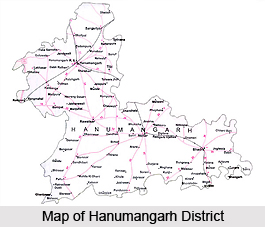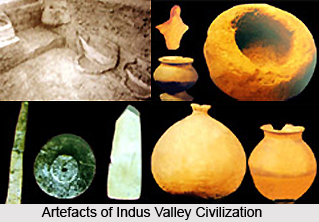 Amongst several districts of the state of Rajasthan , the name of the Hanumangarh deserves to be mentioning. As per the records of the experts , this Hanumangarh district was officially formed on 12.07.94 as the thirty first district of the same state of Indian country. It was being shaped out from the Sriganganagar district.
Amongst several districts of the state of Rajasthan , the name of the Hanumangarh deserves to be mentioning. As per the records of the experts , this Hanumangarh district was officially formed on 12.07.94 as the thirty first district of the same state of Indian country. It was being shaped out from the Sriganganagar district.
Geographical location too is quite important to make note of. Hanumangarh district, is located at 29° 5` to 30° 6` North and 74° 3` to 75º 3` east. This Hanumangarh district is being enclosed by the boundaries on all its sides. In the east , Hanumangarh partakes its boundaries with Haryana state , in the western side with Sriganganagar district, the state of Punjab state in the northern side and also the district of Churu in the southern part. As a whole, the Hanumangarh district covers a geographical area of approximately 12, 650 square kilometers. If one dissects the whole district of Hanumangarh , it has rightly been found that there are seven tehsils here. These include Hanumangarh, Sangaria, Pilibanga, Rawatsar, Nohar, Bhadra and Tibbi.
The climate of the district is semi-dry, extremely hot during the summer and extremely cold during winter. The maximum average temperature varies between 18° to 48° and minimum average temperature lies between 2° to 28° Celsius. The average rainfall of the year has a ranging from 225 to 300 mm.
The experts also have thrown light on the total number of people who have resided in the Hanumangarh district. As per the Census report of the year 2001, the total population of the Hanumangarh district has been enumerated to be 1,517,390 with the density of population of approximately 120 persons/km.
In order to sustain their living, maximum of the people of the Hanumangarh district carry on agricultural activities. In Hanumangarh district Main crops that the people produce in great numbers are rice, bajra, cotton, sonamukhi, wheat, and vegetables.
 For carrying on communication with each other as well as with the outsiders, many of the people of the Hanumangarh district use several languages like Haryanvi , Hindi, Bagri, , Punjabi, and Rajasthani . In Hanumangarh district English is also spoken by quite a number of people as well.
For carrying on communication with each other as well as with the outsiders, many of the people of the Hanumangarh district use several languages like Haryanvi , Hindi, Bagri, , Punjabi, and Rajasthani . In Hanumangarh district English is also spoken by quite a number of people as well.
That the district of Hanumangarh is quite enriched in its historical heritage is quite apparent from various evidences that are found here. . The remnants that have been found at Kalibanga [Pilibanga] in the year 1951 disclose the fact that this area was also an integral portion of Indus Valley Civilization, which is almost five thousand years old. The relics of human skeleton, unidentified scripts, stamps, coins, utensils, jewelry, toys, statues, wells, bathrooms, fort, streets, markets etc., only pointed out to the fact of its ennobled past tradition of the forefathers. Apart from the Kalibanga, there are over hundred places in every nook of the district of Hanumangarh where attests of this ancient civilization can be traced. The ruins found at these places also have been reserved National museum at Delhi and also at Museum at Kalibanga
There is a story related to the Hanumangarh district is quite popular amongst the people. . In the beginning, Hanumangarh was popularly called bhatner . In year 1805, emperor Soorat Singh of Bikaner captivated bhatner after defeating Bhatis. Tuesday is the day of deity "Hanuman" and since the day of his victory was also on that very day , he called bhatner as "Hanumangarh".
Various fairs and festivals are part and parcel of the people of the Hanumangarh district.
Gogameri Mela, Pallu Mela, Shila Mata Mela are quite significant. Each and every people of the Hanumangarh district get enthralled in the mood of the festivity. People from all the other states of Indian Territory give a visit to this Hanumangarh district during the time of festivals.
In Hanumangarh district, Bhadrakali Mela is also an important fair .The famous temple of Maa Bhadrakali is to be found almost seven 7 kilometers from the district headquarter. It is believed that the 6th monarch of Bikaner , namely, Maharaja Ram Singh carry on the task of building this temple and thus fulfilled the whims and wishes of the Emperor Akbar.






